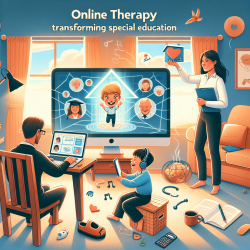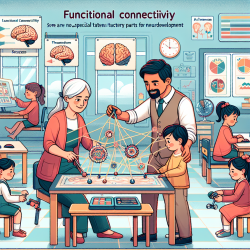Children with neurodevelopmental disorders (NDDs) such as autism spectrum disorder (ASD), attention-deficit/hyperactivity disorder (ADHD), and developmental language disorder (DLD) often exhibit social-emotional and behavioral difficulties. Recent research published in the Journal of Autism and Developmental Disorders titled "Social-Emotional and Behavioural Difficulties in Children with Neurodevelopmental Disorders: Emotion Perception in Daily Life and in a Formal Assessment Context" offers valuable insights into these challenges and provides evidence-based strategies for practitioners.
Key Findings and Implications
The study investigated emotion perception in children with NDDs through parent, teacher, and therapist evaluations and direct assessments of emotion discrimination tasks. Here are the key findings and their implications for practice:
- Emotion Recognition Difficulties: Children with NDDs showed significant challenges in recognizing emotions from facial expressions, tone of voice, and bodily postures. These difficulties were consistent across different diagnostic groups.
- Behavioral Problems: Nearly all children in the study exhibited substantial behavioral issues, as indicated by high scores on the Strengths and Difficulties Questionnaire (SDQ). These problems were reported by both parents and professionals, although there was only modest agreement between the two groups.
- Emotion Discrimination Skills: Compared to typically developing peers, children with NDDs demonstrated a slight but statistically significant delay in emotion discrimination tasks. This delay was consistent across various modalities, including facial expressions and vocal tones.
- Impact on Peer Relationships: A significant number of children with NDDs had no friends, which was linked to their difficulties in emotion discrimination, particularly in recognizing emotional tones in voices.
Strategies for Practitioners
Based on these findings, practitioners can implement several strategies to support children with NDDs:
- Emotion Perception Training: Incorporate emotion recognition and discrimination exercises into therapy sessions. Use multimedia tools such as videos, audio recordings, and interactive games to help children practice identifying emotions in different contexts.
- Parent and Teacher Collaboration: Encourage regular communication between parents, teachers, and therapists to ensure a consistent approach to managing social-emotional difficulties. Use standardized tools like the SDQ to monitor progress and adjust interventions as needed.
- Social Skills Development: Facilitate group activities that promote peer interaction and social skills. Structured playdates, social stories, and role-playing scenarios can help children practice and generalize social-emotional skills in real-life settings.
- Behavioral Interventions: Implement evidence-based behavioral strategies to address specific issues such as hyperactivity, aggression, and withdrawal. Techniques like positive reinforcement, visual schedules, and self-regulation tools can be effective.
Encouraging Further Research
While this study provides valuable insights, further research is needed to explore the long-term effects of emotion perception training and other interventions. Practitioners are encouraged to contribute to this growing body of knowledge by documenting their experiences and outcomes.
To read the original research paper, please follow this link: Social-Emotional and Behavioural Difficulties in Children with Neurodevelopmental Disorders: Emotion Perception in Daily Life and in a Formal Assessment Context.










